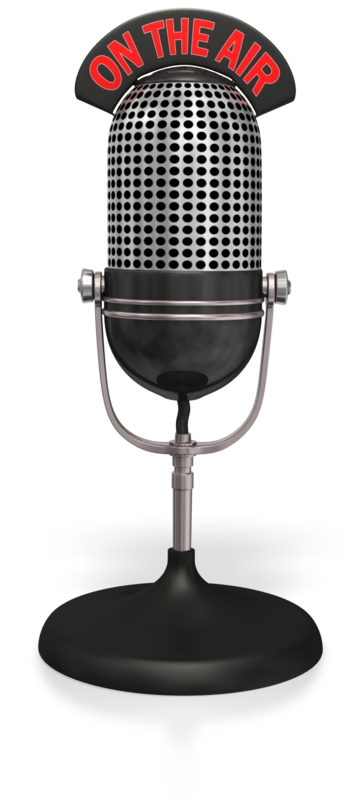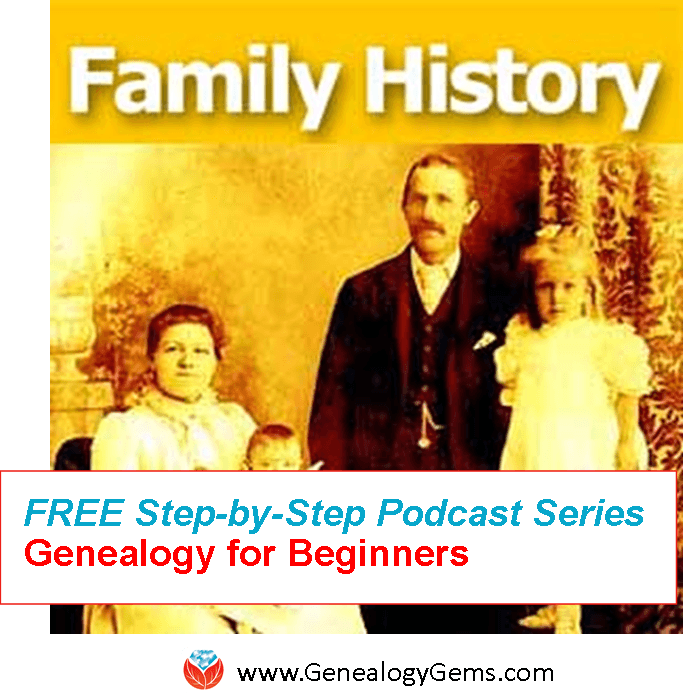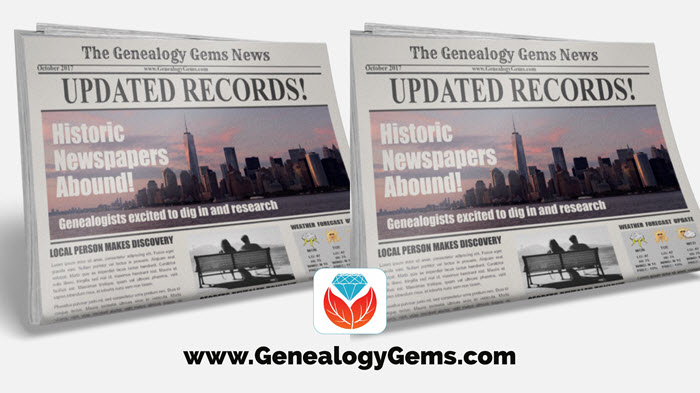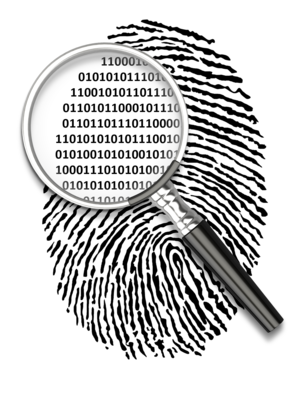by Lisa Cooke | Jul 9, 2014 | 01 What's New, African-American, Digital Archives, Libraries, Oral History
 A video archive of oral history interviews about African-American life, history and culture and struggles and achievements of the black experience in the United States has been donated to the Library of Congress.
A video archive of oral history interviews about African-American life, history and culture and struggles and achievements of the black experience in the United States has been donated to the Library of Congress.
It’s called the HistoryMakers archive, and it’s the single largest archival project of its kind since the WPA recordings of former slaves in the 1930s. According to a press release, “The collection includes 9,000 hours of content that includes 14,000 analog tapes, 3,000 DVDs, 6,000 born-digital files, 70,000 paper documents and digital files and more than 30,000 digital photographs.”
“The collection comprises 2,600 videotaped interviews with African-Americans in 39 states, averaging three to six hours in length. The videos are grouped by 15 different subject areas ranging from science, politics and the military to sports, music and entertainment.”
“The HistoryMakers archive provides invaluable first-person accounts of both well-known and unsung African-Americans, detailing their hopes, dreams and accomplishments—often in the face of adversity,” said James Billington, the Librarian of Congress. “This culturally important collection is a rich and diverse resource for scholars, teachers, students and documentarians seeking a more complete record of our nation’s history and its people.”
 “The collection is one of the most well-documented and organized audiovisual collections that the Library of Congress has ever acquired,” said Mike Mashon, head of the Library’s Moving Image Section. “It is also one of the first born-digital collections accepted into our nation’s repository.”
“The collection is one of the most well-documented and organized audiovisual collections that the Library of Congress has ever acquired,” said Mike Mashon, head of the Library’s Moving Image Section. “It is also one of the first born-digital collections accepted into our nation’s repository.”
This African American oral history archive was donated so it would be preserved and accessible to generations yet to come. However, this doesn’t mean the HistoryMakers organization is done gathering stories. According to the press release, “oral histories are continually being added to the growing archive. The oldest person interviewed was Louisiana Hines, who passed away in 2013 at 114. She was one of the iconic “Rosie the Riveter” workers during War World II. One of the youngest is a prima ballerina, Ayisha McMillan, who was 29 at the time of her interview.”
Visit the HistoryMakers Archive here.
by Lisa Cooke | Jul 9, 2014 | 01 What's New, Family Reunions, Inspiration, Social Media

McClellan Family Reunion, Summer 2014, Cleveland, Ohio.
A couple weeks ago, I helped host 47 people at my family reunion here in Cleveland, Ohio. Local relatives made up about half the group: the rest flew and drove in from Arkansas, Nevada and Washington state. We spent 4 days splashing in Lake Erie, driving through the countryside, visiting an Amish-run cheese house and local historic sites, kayaking, hiking in the woods, wading in the sparkling shallows of the Cuyahoga River, and visiting, eating, and visiting some more (and then eating some more). The fundraising auction in my backyard raised such an ruckus that neighbors at the other end of the block asked what in the WORLD was going on at our house that night.
One of the most surprising things about the reunion–other than my brother’s natural gifts as a comedian-auctioneer–was the degree to which it worked to communicate on Facebook. My grandparents were the only ones we needed to actually call about all the reunion plans. We sent no letters–not one!
Here are my 9 tips for organizing your family reunion on Facebook (mostly.) Some of these we did well and others we’ll do better in the future:
1. Make sure at least one member of each nuclear family is active on Facebook. You want a significant percent of relatives participating. If you’re family just isn’t on Facebook, look for other ways to be in touch (group text?).
2. Create a family Facebook page. Click here to learn how. This lets your family post reunion- and family-related items in your own secure group.
3. Reserve the date up to a year in advance. Suggest a time frame and/or a few specific dates on Facebook. Tag everyone on the post to get them to notice and respond. However, you may not get much response. At least in our family, people tend not to volunteer or comment if they’re not personally, directly being asked about something urgent. Once you’ve given people a reasonable amount of time to comment on your suggested dates (and consulted those not on Facebook), JUST PICK A DATE. Then post it (and call the non-Facebookers). Again, tag everyone so you know they see it.
4. Start advertising immediately. Those who travel some distance may need more incentive to come. It’s especially helpful when you can convince the in-laws that they want to come. Do this by catering to people’s interests and hobbies. Post pictures of places you plan to visit together, images of recipes you plan to serve, the website of the local golf course/shopping district/historic site/art gallery/amusement park or any other local attraction that might persuade people to make the trip (whether this is officially part of the reunion activities or not). Tag people in those posts and include URLs to attraction websites: “Uncle Albert, I know how much you love to golf. Why don’t you stay for an extra day and play 18 holes on this championship course?” In the media world, this is called creating “buzz.”
5. Encourage long-distance relatives to introduce themselves and their families. My aunts and uncles were amazed at how much the kids had all grown. They see us so infrequently that it was super helpful to post the kids’ names, updated pix and interests before the reunion. That way, they could talk to my son about his cello playing and my daughter about her upcoming 8th birthday. We’ve asked everyone to start sharing family news and events on the family page, not just their own page. That way we can capture the highlights of all the big family milestones before the next reunion.
6. Play travel agent. Post information about the local airport, bus route, hotels, etc, several months in advance. Encourage relatives to share their hotel information so they can stay together (hotel pool party!) or coordinate travel plans.
7. Post details about the upcoming gathering. What should people plan to bring, wear and do? Do they need to bring beach wear, walking shoes, an umbrella, a baby picture of themselves, or a T-shirt to decorate? Tell them on Facebook ahead of time. Post the initial meeting place and time, along with its address (almost EVERYONE, including the over-60s used GPS to get around while they were here). You can hand out the rest of the itinerary at the reunion, if you need to.
8. Post DURING the reunion. Offer a prize for the best picture posted during the reunion (or the most pictures posted). That tells everyone at home what they’re missing while building excitement among attendees and preserving memories for the future. When uncles are tagging their nephews in photos (and vice versa), they’re building relationships. Remembering names. “Friend-ing.” I don’t suggest posting last-minute changes in plans: when traveling, not everyone makes Facebook-checking a priority. Only do this if everyone knows to check the Facebook page frequently during your gathering.
9. Follow up. Is everyone supposed to send a donation to the reunion fund afterward, mail a card to the great-aunt who couldn’t make it, or share all their reunion pictures on a photo-sharing site? Thank the reunion hosts, planners and those who sacrificed a lot (in time or money) to be present. When is the next reunion? Whoever’s planning the next one can pick up where you left off.
 Have you used Facebook to get the word out about a family reunion? Share your experiences and learning at our the Genealogy Gems Podcast Facebook Page.
Have you used Facebook to get the word out about a family reunion? Share your experiences and learning at our the Genealogy Gems Podcast Facebook Page.
by Lisa Cooke | Jul 8, 2014 | 01 What's New, Beginner, Blogs, Family History Podcast, Social Media

Listen to the Family History: Genealogy Made Easy podcast by Lisa Louise Cooke. It’s a great series for learning the research ropes and well as refreshing your skills.
Family History: Genealogy Made Easy
with Lisa Louise Cooke
Republished July 8, 2014
[display_podcast]
Download the Show Notes for this Episode
Welcome to this step-by-step series for beginning genealogists—and more experienced ones who want to brush up or learn something new. I first ran this series in 2008-09. So many people have asked about it, I’m bringing it back in weekly segments.
Episode 39: How to Start a Genealogy Blog, Part 2
This week we continue to explore the world of family history blogging, a terrific way to share your findings, connect with other researchers and long-lost relatives, and pass on your own research experiences. In the last episode The Footnote Maven advised us on how to get started blogging. In this episode I interview TWO more successful genealogy bloggers:
- Denise Levenick, author of The Family Curator Blog and alter ego of “Miss Penny Dreadful,” who writes on the Footnote Maven’s Shades of the Departed blog. Denise will tell us about the origins of her Family Curator blog, and why she feels motivated to write it. And she’ll also share some of her top tech tips!
- Schelly Tallalay Dardashti, author of the Tracing the Tribe blog. She’ll tell us how she got started blogging, and what really got her hooked on it. She’ll tell us about her process for posting articles and how much time she spends blogging, and will dispel the myth that you have to be technically inclined to have a blog.
This episode is your personal genealogy blogging training with some of the best in the biz!
Denise Levenick: The Family Curator
Denise, a native Californian, has worked as an editor and journalist since publishing a neighborhood newspaper in grade school and has taught both journalism and literature in Pasadena schools for 19 years, so it’s no wonder that she took to blogging.
Here are some highlights from my conversation with Denise:
- She says that “each of us is a family curator with responsibility.”
- Use a free downloadable software program called Transcript. I found the most recent version available and described online here.
- She mentions a blog called Family Matters on the Moultrie Creek website.
- Denise mentions Evernote, free software helps thousands of genealogists keep their research organized and their sources (online and offline) at their fingertips. Want some help using Evernote for genealogy? Click here to read some of my top tips.
- She also mentioned Scribefire. (Update: Scribefire is now a web browser extension. Chrome: https://chrome.google.com/webstore/search/scribefire There is also GenScribe here: http://genscriber.com/genapps/start)
Schelly Talalay Dardashti: Jewish genealogy specialist
Schelly Talalay Dardashti has tracked her family history through Belarus, Russia, Lithuania, Spain, Iran and elsewhere. A journalist, her articles on genealogy have been widely published. In addition to genealogy blogging, she speaks at Jewish and general genealogy conferences, is past president of the five-branched JFRA Israel, a Jewish genealogical association, a member of the American Jewish Press Association, and the Association of Professional Genealogists.
Highlights from the conversation with Schelly:
- “You don’t have to be a techie to blog!”
- She mentions using Feedburner for headline animation. Feedburner was bought by Google; learn more about headline animation from Google here.
- Schedule blog posts in advance for your convenience.
- Got Jewish DNA? She recommends testing through Family Tree DNA because they have a critical mass of Jewish DNA samples already in their system.
- Genealogy conference recommendation: The Southern California Genealogy Jamboree.
by Lisa Cooke | Jul 5, 2014 | 01 What's New, Findmypast, Who Do You Think You Are?
Findmypast  in conjunction with Wall to Wall, the makers of the popular television series Who Do You Think You Are? in the United Kingdom will soon be launching a new commercial website called Create Your Family Story. The site will offer a “quick, free and easy way to produce your family story.”
in conjunction with Wall to Wall, the makers of the popular television series Who Do You Think You Are? in the United Kingdom will soon be launching a new commercial website called Create Your Family Story. The site will offer a “quick, free and easy way to produce your family story.”
The website’s launch is coinciding with the ten year anniversary of the British program. According to Who Do You Think You Are? magazine’s recent blog post, “the resource will enable fans to enter details of their immediate family and create a personalised ‘episode’ that can be shared with friends and relatives.”
While the website will not be going live for another few weeks still, you can head to www.whodoyouthinkyouarestory.com and sign up to receive news about the launch.
by Lisa Cooke | Jun 30, 2014 | 01 What's New, Conferences, DNA
The fourth annual Forensic Genealogy Institute (FGI) will be held March 26-28, 2015, at the Wyndham Love Field Hotel in Dallas, Texas. Two concurrent, 20-hour  courses will debut: “Forensic Genealogy Master Practicum” and “Advanced Genetic Genealogy and Unknown-Parentage Cases.”
courses will debut: “Forensic Genealogy Master Practicum” and “Advanced Genetic Genealogy and Unknown-Parentage Cases.”
“FGI offers attendees one-of-a-kind education in forensic genealogy and access to expert forensic genealogists who can answer questions and act as mentors,” said Leslie Brinkley Lawson, CAFG President. “We are excited to offer FGI 2015 participants the opportunity to participate in an unprecedented forensic-genealogy practicum or to gain experience in cutting-edge genetic genealogical research.”
The genetic genealogy course sounds especially fascinating. The course description includes how-tos on developing custom DNA-testing plans, analyzing genetic test results and integrating traditional genealogical research with DNA test results to address research questions.
“Genealogists who can use DNA to successfully address unknown-parentage cases are in great demand,” says course coordinator CeCe Moore. “This unique course offers in-depth instruction of the methodologies used by professional genetic genealogists.”
Each FGI 2015 course offers 20 hours of instruction over just three days, minimizing hotel costs and time away from families and jobs. The learning opportunities presented at FGI are created specifically for professional, practicing genealogists who specialize or seek to specialize in forensic genealogy.
Registration for the 2015 Forensic Genealogy conference will open in summer 2014.
 A video archive of oral history interviews about African-American life, history and culture and struggles and achievements of the black experience in the United States has been donated to the Library of Congress.
A video archive of oral history interviews about African-American life, history and culture and struggles and achievements of the black experience in the United States has been donated to the Library of Congress. “The collection is one of the most well-documented and organized audiovisual collections that the Library of Congress has ever acquired,” said Mike Mashon, head of the Library’s Moving Image Section. “It is also one of the first born-digital collections accepted into our nation’s repository.”
“The collection is one of the most well-documented and organized audiovisual collections that the Library of Congress has ever acquired,” said Mike Mashon, head of the Library’s Moving Image Section. “It is also one of the first born-digital collections accepted into our nation’s repository.”


 in conjunction with Wall to Wall, the makers of the popular television series Who Do You Think You Are? in the United Kingdom will soon be launching a new commercial website called Create Your Family Story. The site will offer a “quick, free and easy way to produce your family story.”
in conjunction with Wall to Wall, the makers of the popular television series Who Do You Think You Are? in the United Kingdom will soon be launching a new commercial website called Create Your Family Story. The site will offer a “quick, free and easy way to produce your family story.” courses will debut: “Forensic Genealogy Master Practicum” and “Advanced Genetic Genealogy and Unknown-Parentage Cases.”
courses will debut: “Forensic Genealogy Master Practicum” and “Advanced Genetic Genealogy and Unknown-Parentage Cases.”


